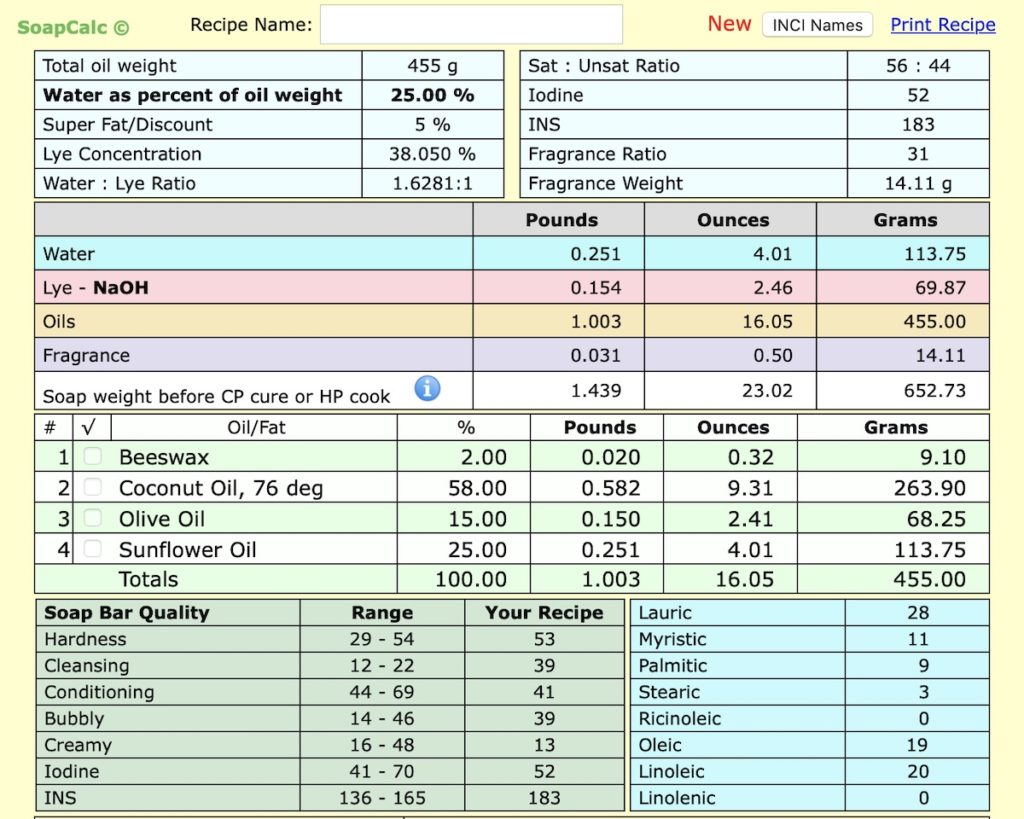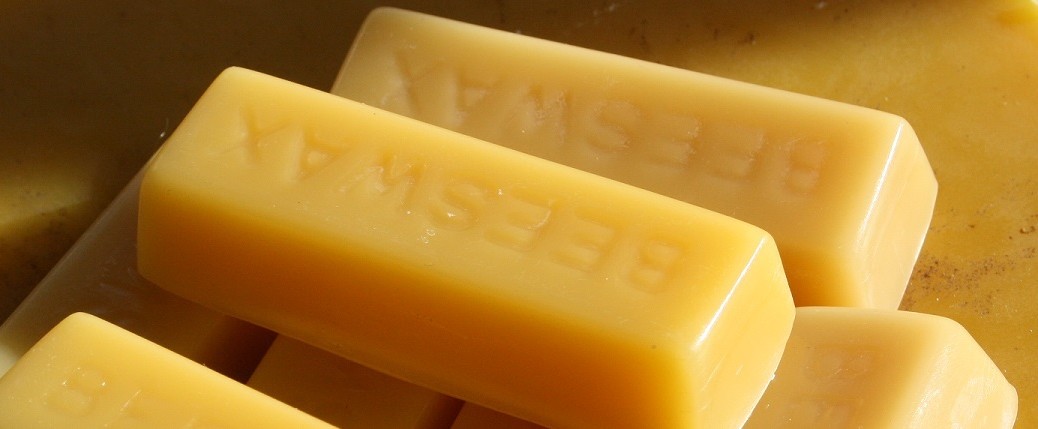I used to think that homemade soap would be a great way to use up some of that beeswax mountain. That is until I started to look into the subject and it turns out to be a bit more complicated than I thought.
For a start there’s the matter of CAUSTIC SODA. Note the capital letters there; those are there as a mark of Respect. When using Caustic Soda, be on your Toes because it is a VERY NASTY chemical indeed. Wear gloves, don’t spill it and don’t blame me if you do.
When mixed with water it gets hot and when you then mix that solution with a mixture of fats and oils you get a very strong chemical reaction during which more heat is produced and the end result is soap.
Then there’s the beeswax. Beeswax, as we know, is about the most recalcitrant substance known to man so don’t spill that either. It is also flammable – click here for more beeswax facts. Its effects on soap and the making of it, even in tiny quantities are profound.
For a start, in order to melt the beeswax you have to heat the oils much hotter than you normally would. Then, even a 1% addition of beeswax will cause the soap to thicken very quickly. If you are an experienced soap maker you will have gathered I am not! Nevertheless, here is a recipe for beeswax soap I’ve concocted – it works, it makes a lovely sudsy soap and I’m still here to tell the tale.
Ingredients
- 65g NaOH (Caustic Soda),
- 116g Water;
- 70g Olive oil;
- 263g Coconut oil;
- 112g Sunflower oil;
- 10g clean, grated Beeswax;
- 2 tsp Lavender oil.
Method
- Put beeswax, sunflower, olive and coconut oils in a pan and heat very gently till the beeswax has melted;
- Weigh the water and put it in a pyrex jug or similar;
- Get your rubber gloves on;
- Carefully weigh caustic soda;
- Carefully pour the caustic soda into the jug with the water and stir with the butt end of a wooden spoon – get all the grains aloft and swirling then put the jug somewhere safe and leave it alone;
- Grease your soap mould – such as an old loaf tin – with a lump of coconut oil;
- Get your hand blender ready;
- When the beeswax has melted, stir the oils with a spatula just to get them well mixed;
- Allow the mixture to cool a little, you can stand it in water bath or just let it cool naturally, till you see it beginning to congeal on the base of the pan;
- Pour in the caustic soda/water mixture and stir gently (with the mixer turned off) then add your lavender;
- Now turn the mixer on and give it what-for. It should turn a nice golden colour and start to thicken;
- When it looks like a cake batter, pour it into your soap mould;
- Wrap the whole thing in clingfilm and old towels to keep the heat in and leave it till it’s set;
Once set and still a bit warm turn it out of the mould and cut it up into bars. If yours is like mine you will notice that the lovely golden colour has gone away and the soap is now a warm ivory.
If you are unsure of what quantities of ingredients to use, there are several online resources for soapmakers. soapcalc.net has an online soap calculator which allows you to add in your oil ingredients and water as percentages of the total oils and it will give you the correct amount of caustic soda to use.
The table below shows the output when I input the oils and beeswax in my recipe above. The pink row (Lye – NaOH) shows the amount of Caustic Soda to use.

Click here to go to the soapcalc soap calculator
Click here for simple beeswax wraps
Click here for how to render beeswax
Click here for beeswax lipbalm recipe
Click here for beeswax handcream recipe
Click here for beeswax furniture polish recipe
Click here for beeswax soap recipe
Click here for beeswax candlemaking
Click here for emergency home dental repairs with beeswax
Copyright © Beespoke.info, 2014. All Rights Reserved.

Sorry – me again! Do you also know roughly how many bars this makes? Thank you again 🙂
It depends on how big your bars are.
Don’t make them too thin or they will just go soft.
Hiya there, would you possibly be able to tell me how long this takes to cure? Thank you so much. I love the recipe! Ordering ingredients now 🙂
To be honest, I haven’t made this for years now but I don’t think it took long.
The reaction should be over once it’s cold and after that it’s just a case of hardening it off.
I’ve scouted around on the internet and the opinion seems to be between 2 and 6 weeks.
Excuse me but I do not think 65grams of Caustic soda is safe? can you please confirm?
Caustic soda is never safe!
Be sure you know what you are doing and always check ingredients on a soap calculator such as soapcalc.net